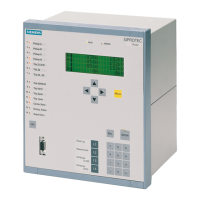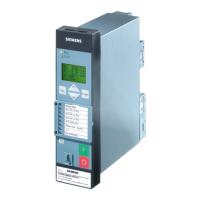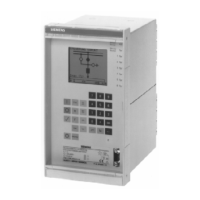2 Functions
160
7UT613/63x Manual
C53000-G1176-C160-2
Since the harmonic restraint operates individually per phase, the protection is fully op-
erative even when e.g. the transformer is switched onto a single-phase fault, whereby
inrush currents may possibly be present in one of the healthy phases. However, it is
also possible to set the protection such that not only the phase with inrush current ex-
hibiting harmonic content in excess of the permissible value is blocked but also the
other phases of the associated stage are blocked (so called "cross-block function").
This cross-block can be limited to a selectable duration. Figure 2-73 shows the logic
diagram of this function.
Cross-block refers only to the three phases. Phase inrush currents do not block the
residual current stages nor vice versa.
Figure 2-73 Logic diagram of the crossblock function for the phase currents (simplified)
2.4.1.6 Fast Busbar Protection Using Reverse Interlocking
Application
Example
Each of the overcurrent stages can be blocked via binary inputs of the relay. A setting
parameter determines whether the binary input operates in the “normally open” (i.e.
energise input to block) or the “normally closed” (i.e. energise input to release) mode.
Thus, the overcurrent time protection can be used as fast busbar protection in star
connected networks or in open ring networks (ring open at one location), using the „re-
verse interlock“ principle. This is used in high voltage systems, in power station auxil-
iary supply networks, etc., in which cases a transformer feeds from the higher voltage
system onto a busbar with several outgoing feeders.
The time overcurrent protection is applied to the lower voltage side. Reverse interlock-
ing means that the overcurrent time protection can trip within a short time T I>>,
which is independent of the grading time, if it is not blocked by pickup of one of the
next downstream time overcurrent relays. It is always the protection element nearest
to the fault that will trip with the short time delay since this element cannot be blocked
by a protection element located behind the fault. The time stages T I> or T Ip
operate as delayed backup stages. Pickup signals of the load-side protective relay are
output as input message (exists separately for the phase current stages and the zero
sequence current) to a binary input at the feeder-side protective relay.

